Related Research Articles

NatWest Group PLC is a British banking and insurance holding company, based in Edinburgh, Scotland.

Lloyds Bank plc is a British retail and commercial bank with branches across England and Wales. It has traditionally been considered one of the "Big Four" clearing banks. Lloyds Bank is the largest retail bank in Britain, and has an extensive network of branches and ATMs in England and Wales and offers 24-hour telephone and online banking services.

National Provincial Bank was a retail bank which operated in England and Wales. It was created in 1833 as National Provincial Bank of England, and expanded largely by taking over a number of other banks. Following the transformative acquisition of Union Bank of London in 1918, it changed its name to National Provincial and Union Bank of England, then in 1924 shortened its name again to National Provincial Bank. It further acquired Coutts Bank in 1920, Grindlays Bank in 1924, Isle of Man Bank in 1961, District Bank in 1962, thus becoming one of the "Big Five" that dominated the UK banking sector for much of the 20th century, together with Barclays Bank, Lloyds Bank, Midland Bank and Westminster Bank. On 1 January 1970, it completed its merger with Westminster Bank to form National Westminster Bank.

Coutts & Co. is a British private bank and wealth manager headquartered in London, England.
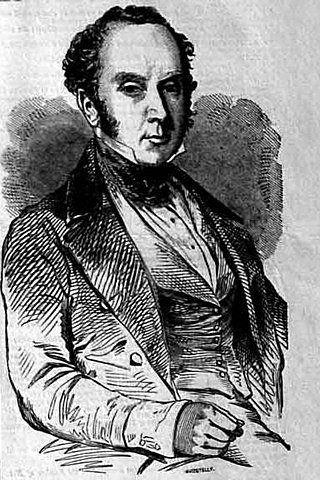
George Carr Glyn, 1st Baron Wolverton was a banker with interests in the railways, a partner in the family firm of Glyn, Mills & Co., which was reputed to be the largest private bank in London.
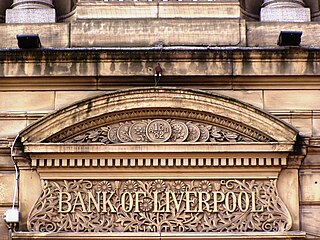
The Bank of Liverpool was a financial institution founded in 1831 in Liverpool, England.
Banking in the United Kingdom can be considered to have started in the Kingdom of England in the 17th century. The first activity in what later came to be known as banking was by goldsmiths who, after the dissolution of English monasteries by Henry VIII, began to accumulate significant stocks of gold.
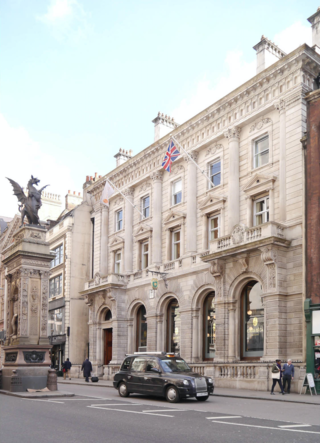
Child & Co. was a formerly independent private bank in the United Kingdom that was later part of the NatWest Group. The Royal Bank of Scotland incorporating Child & Co., Bankers was based at 1 Fleet Street on the western edge of the City of London, beside Temple Bar Memorial and opposite the Royal Courts of Justice. Child & Co. was authorised as a brand of The Royal Bank of Scotland by the Prudential Regulation Authority. The last remaining branch closed in June 2022, and it is no longer listed as one of the NatWest Group's brands.

The Royal Bank of Scotland is a major retail and commercial bank in Scotland. It is one of the retail banking subsidiaries of NatWest Group, together with NatWest and Ulster Bank. The Royal Bank of Scotland has around 700 branches, mainly in Scotland, though there are branches in many larger towns and cities throughout England and Wales. The bank is completely separate from the fellow Edinburgh-based bank, the Bank of Scotland, which pre-dates the Royal Bank by 32 years. The Royal Bank of Scotland was established to provide a bank with strong Hanoverian and Whig ties.

Sir Charles Asgill, 1st Baronet merchant banker, was the third son of Henry Asgill, silkman, of St Clement Danes, Middlesex and was educated at Westminster School.

Messrs Drummond is a formerly independent private bank in the United Kingdom that is now part of NatWest Group. The Royal Bank of Scotland incorporating Messrs Drummond, Bankers is based at 49 Charing Cross in central London. Drummonds is authorised as a brand of The Royal Bank of Scotland by the Prudential Regulation Authority.

Sir Richard Glyn, 1st Baronet was a British banker and politician, who together with Joseph Vere and Thomas Hallifax founded the Bank of Vere, Glyn & Hallifax, which evolved into Williams & Glyn's Bank.
Sir Richard Carr Glyn, 1st Baronet was a British banker and politician.
Williams & Glyn's Bank Limited was established in London in 1970, when the Royal Bank of Scotland merged its two subsidiaries in England and Wales, Williams Deacon's Bank Ltd. and Glyn, Mills & Co. In 1985, Williams & Glyn's was fully absorbed into the Royal Bank of Scotland and ceased to trade separately.
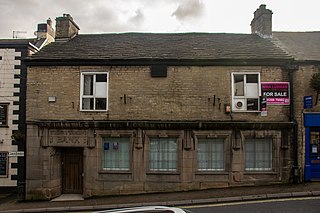
Williams Deacon's Bank was acquired by the Royal Bank of Scotland in 1930. It had a large network of branches in the north-west of England. In 1970, it was integrated with Glyn, Mills & Co. and The National Bank to form Williams & Glyn's Bank.
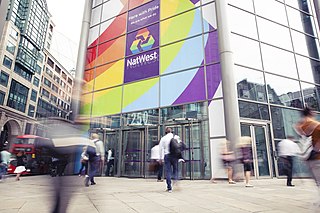
National Westminster Bank, trading as NatWest, is a major retail and commercial bank in the United Kingdom based in London, England. It was established in 1968 by the merger of National Provincial Bank and Westminster Bank. In 2000, it became part of The Royal Bank of Scotland Group, which was re-named NatWest Group in 2020. Following ringfencing of the group's core domestic business, the bank became a direct subsidiary of NatWest Holdings; NatWest Markets comprises the non-ringfenced investment banking arm. The British government currently owns 35% of NatWest Group after spending £45 billion bailing out the lender in 2008; the proportion at one point was 54.7%. NatWest International is a trading name of RBS International, which also sits outside the ringfence.
The National Commercial Bank of Scotland Ltd. was a Scottish commercial bank. It was established in 1959 through a merger of the National Bank of Scotland with the Commercial Bank of Scotland. Ten years later it merged with the Royal Bank of Scotland, to become the largest clearing bank in Scotland. The National Commercial Bank issued its own banknotes.
A Ruffer & Sons was a City of London accepting house founded in 1872 and dissolved in 1964.
Sir Thomas Hallifax, of Gordon House, Enfield, Middlesex, was an English banker, Lord Mayor of London and Member of Parliament.
Holt's Military Banking is a trading name of The Royal Bank of Scotland, a subsidiary of NatWest Group, offering dedicated banking facilities to service personnel in the United Kingdom and on operational tours of duty overseas. It can trace its origins to a Mr. Vesey, army agent to the 23rd Regiment of (Light) Dragoons, in Dublin in 1802.
References
- 1 2 3 4 5 Fulford, Roger (1953). Glyn's, 1753–1953: Six generations in Lombard Street. Macmillan.
- ↑ Ziegler, Philip (1988). The Sixth Great Power: Barings 1762–1929. pp. 244–254. ISBN 0-00-217508-8.
- ↑ "OLDEST ENGLISH BANK TO LOSE ITS IDENTITY; Child's, on Same Site Since 1560, Made Famous by Dickens, Will Be Merged With Glyn's". The New York Times . 4 May 1924. Retrieved 29 September 2021.
- ↑ Gore-Browne, Eric (1933). Glyn, Mills & Co.
- ↑ TIMES, Special to THE NEW YORK (23 April 1952). "Bank Uses TV to Match Signatures at a Distance". The New York Times . Retrieved 29 September 2021.
- ↑ "Glyn, Mills & Co". The Royal Bank of Scotland Group, Heritage Archives. 2013. Retrieved 21 September 2013.